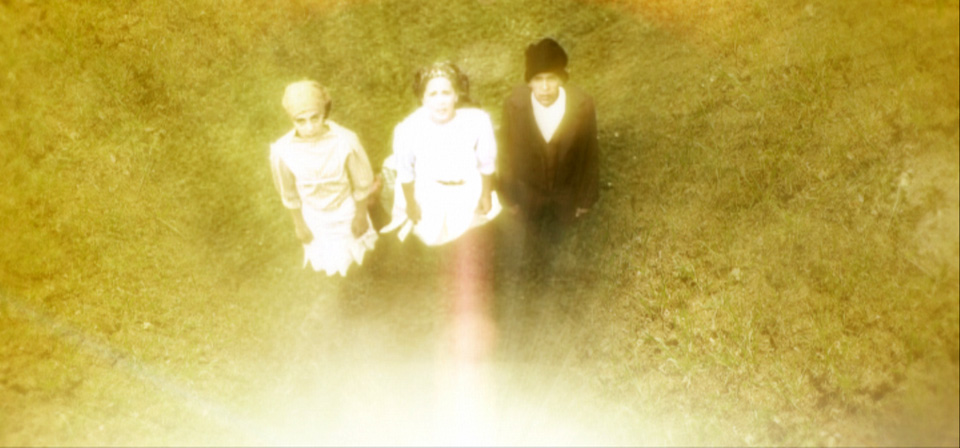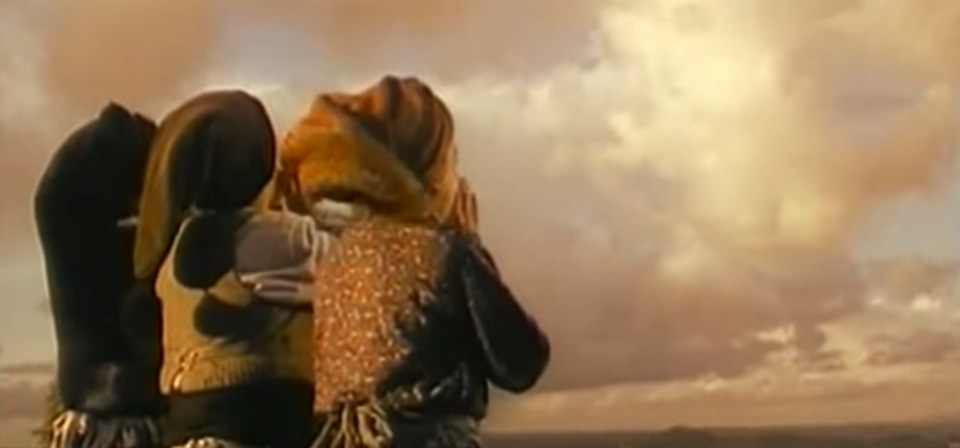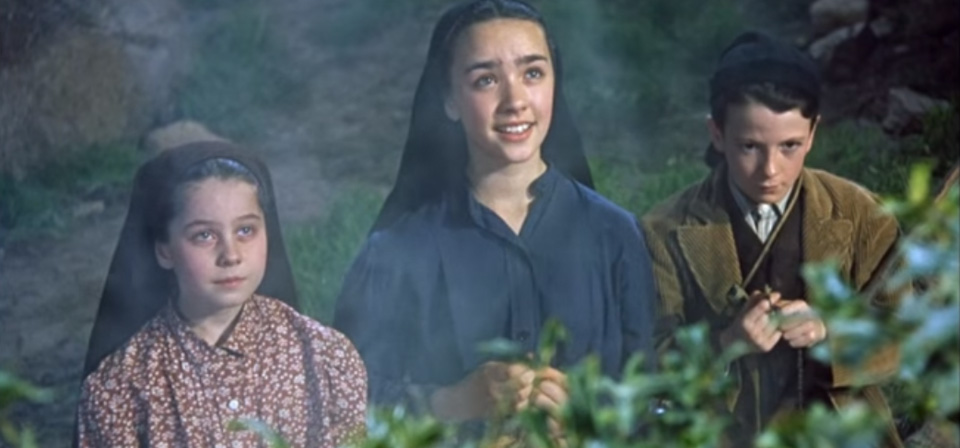Our Lady of Fatima at the Movies
May is the Month of Mary, and May 13 is the memorial day of Our Lady of Fátima. On this day in 1981, Pope John Paul II was shot in St. Peter’s Square, and he ascribed his survival to the intercession of the Blessed Virgin, linking the attempt on his life with the “Third Secret” of Fátima.
The title Our Lady of Fatima honors the Blessed Virgin in connection with the apparitions to three young visionaries in Fátima, Portugal, on the 13th day of each month starting in May and ending in October, when the famous “Miracle of the Sun” occurred.
I have never seen a bad movie about Fátima. Three stand out to me: The Miracle of Our Lady of Fatima (1952) is the best known; Apparitions at Fátima (1992) is the most authentic; and The 13th Day (2009) is the most artful — and my favorite of the three.
The Miracle of Our Lady of Fatima (1952) is an old-fashioned production in the Golden Age tradition of religious fare like The Song of Bernadette. It’s not as good a movie as The Song of Bernadette (the best of Hollywood’s Golden Age piety, in my opinion), but it’s well made, entertaining, and fairly faithful to the main facts (despite liberties such as Gilbert Roland’s fictional rascal with a heart of gold, added to help mediate the story for mainstream audiences).
Positioning the Catholic story for a mostly Protestant 1950s public, the film opens with the October 1910 revolution, emphasizing the severe anticlerical persecutions of the revolutionaries and the fidelity of the Portuguese people to the faith of their fathers. The anticlerical oppressors make for more formidable antagonists than the skeptical civil authorities in The Song of Bernadette, ramping up the drama.
Perhaps as a concession to the dim reputation of the number 13, opening narration revises the date of the first apparition to the nonexistent date of Sunday, May 15, 1917 (May 15 was a Tuesday that year). In a nice touch, Mary’s first appearance is presented as a heavenly response (along with some thunder and lightning) to the children shouting the words “Hail Mary” to hear the echo.
Unsurprisingly, the real Sister Lúcia, the eldest of the three visionaries, didn’t like the Hollywood take on her story. Her favorite version, also praised by Pope John Paul II, was the Portuguese production Apparitions at Fátima, by far the most historically accurate and complete, and the one in which the message of Fátima — a call to conversion and prayer, especially the rosary, and reparation for one’s own sins and those of the whole world — is clearest.
Apparitions at Fátima — the Portuguese title is simply Aparição (Apparition) — is the version of the story screened daily for pilgrims at Fátima in over half a dozen languages.
The film deals frankly with some of the potentially less palatable elements of the Fátima story, from the terrifying vision of hell to the harsh penances the children adopted in reparation of the sins of the world, including abstaining from water on hot days and wearing ropes tied tightly around their waists.
Production-wise, Apparitions at Fátima is the most limited of the three. Simple special effects and modest production values aren’t a problem, but the score and voice-over narration are jarring, and they detract from the charming docudrama-like simplicity of the film.
The 13th Day, a British indie, is, for me, the most satisfying of the three, though its art-house minimalism is off-putting to some. Presented in flashbacks as Sister Lúcia writes her memoirs, the film distills the story into simple vignettes devoid of superfluous detail — fragmentary, jewel-like childhood memories crystalized and sharpened over decades in Sister Lúcia’s mind.
The 13th Day has by far the most effective handling of the Marian apparitions. Most of the film is shot in gorgeous, diffused black-and-white, but as the Blessed Virgin approaches, color bleeds into the frame, suggesting an experience of an entirely new kind. Another shrewd choice: When the Blessed Virgin speaks, the voice we hear is that of Sister Lúcia narrating her memoir.
All three films benefit from location shooting in Portugal, though Apparitions at Fátima makes the best use of its locations. The Miracle of Our Lady of Fatima sounds the best, thanks to the Oscar-nominated score by Max Steiner (Casablanca, Gone With the Wind). The 13th Day is the most visionary, using atmosphere and mood to evoke an experience of transcendence beyond the other two.
Whichever you choose to watch, you won’t go wrong.
Related

The 13th Day (2009)
The 13th Day is the best movie ever made about Fátima — the most beautiful and effective, as well as one of the most historically accurate.

Apparitions at Fatima (1992)
Warner Bros’ The Miracle of Our Lady of Fatima may be better known, but Daniel Costelle’s 1992 Portuguese production Apparitions at Fatima is a more historically accurate and spiritually sensitive account of the visionary experiences of three young Portuguese children in 1917, culminating in the miracle of the sun witnessed by thousands.

The Miracle of Our Lady of Fatima (1952)
Old-fashioned, reverent, basically faithful to the facts, The Miracle of Our Lady of Fatima never quite emerges from the shadow of the earlier, superior The Song of Bernadette, but it ups the ante with sterner opposition (militant Marxists rather than freethinking civil authorities) and a more dramatic climax.
Recent
- Are there too many Jesus movies?
- Antidote to the digital revolution: Carlo Acutis: Roadmap to Reality
- “Not I, But God”: Interview with Carlo Acutis: Roadmap to Reality director Tim Moriarty
- Gunn’s Superman is silly and sincere, and that’s good. It could be smarter.
- Elio is a space adventure that Toy Story’s Andy would actually enjoy
Home Video
Copyright © 2000– Steven D. Greydanus. All rights reserved.